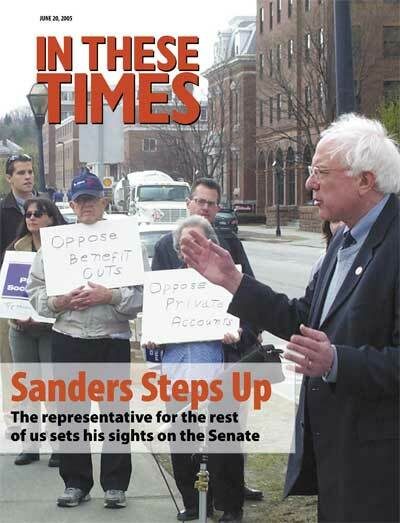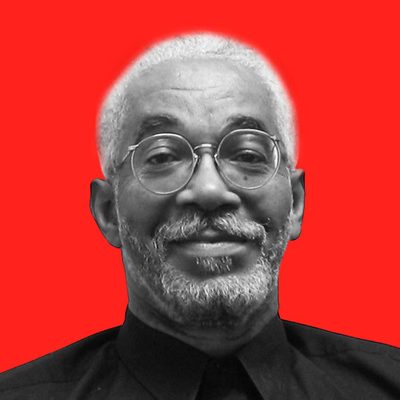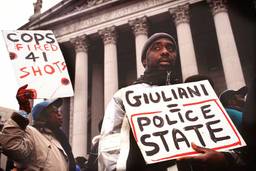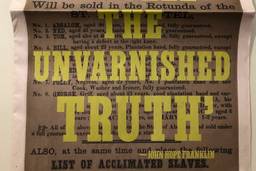The Republican Party’s “full spectrum dominance” of the national government and most of the corporate media has produced an anxious mood within the African-American community. Conditions are so bleak in so many areas we seem on the verge of a social emergency.
A sense of impending crisis has jump-started efforts to unify the black community. Last month at the National Press Club in Washington D.C., a diverse group of black leaders announced that as the next step in this unity campaign, the 10th anniversary commemoration of the Million Man March will be transformed into the Millions More Movement.
“This is a movement, not just a march,” said the Rev. Willie F. Wilson, pastor of the Union Temple Baptist Church in Washington, D.C., and executive director of the event. An ongoing “movement is needed to help the downtrodden among us,” he told those assembled, adding it was time for a “spiritual, economic and social rebirth in communities that many have given up as lost.”
The event, scheduled for October 14-16 in the nation’s capital, was conceived by Minister Louis Farrakhan, the controversial leader of the Nation of Islam (NOI); Farrakhan also was the architect of the October 16, 1995 Million Man March.
There are more than 100 conveners, including the Revs. Jesse Jackson and Al Sharpton, NAACP Chairman Julian Bond, author/commentator Julianne Malveaux, hip-hop mogul Russell Simmons and Vashti McKenzie, the bishop of the African Methodist Episcopal Church. Firming up Farrakhan’s radical flank is convener Malik Zulu Shabazz, leader of the New Black Panther Party. Although the list is extraordinarily broad-based and ecumenical, the event has already drawn criticism, primarily because of Farrakhan’s involvement.
“It’s very sad that the only leader the African-American community can find to rally around is an unrepentant bigot, an anti-Semite who still holds to his views,” says Abraham Foxman, national director of the Anti-Defamation League (ADL). The ADL has taken the lead in denouncing the event but other organizations may share Foxman’s distress about Farrakhan’s leadership. Farrakhan supporters contend he no longer holds racist and anti-semitic views.
The fiery NOI leader’s role in the 1995 march also tarnished that effort in the eyes of many, preventing several black leaders from lending support to the gathering. But after witnessing the spectacle of hundreds of thousands of black men gathered in fraternity and peace, a number of African-American leaders retroactively jumped on the bandwagon.
The Million Man March was deemed a huge success by many in the black community. Most accounts in the black media estimated that at least two million men attended. However, the event was criticized by leading black feminists for its gender exclusivity, its focus on abstract notions like “atonement” rather than on issues of social injustice, and its lack of programmatic follow-through.
Supporters were also reluctant to concede they squandered some of the march’s potential by failing to amass a database of participants, propose a specific agenda or design a fund-raising mechanism.
Organizers of the Millions More Movement apparently took their cue from those criticisms. This event will be much more inclusive: Women, children, gays and other races all are welcome. “This will be a coalition of national leaders working to create a framework that goes beyond just marching to actually making fundamental changes,” Chae Carrier, a Millions More Movement spokesperson, told Blackamericaweb.com.
Accordingly, the mission statement of the movement lists an overall agenda and a number of demands. All aspects of community development are included in a vague list of agenda items, such as educational development, economic development and political development. The demands include an end to police brutality, racial profiling and substandard education.
For several years, Farrakhan has been trying to transform his image from that of an intransigent black supremacist to that of an avuncular, social conciliator. He’s sought to intervene in a variety of social hot spots, including truce efforts between warring street gangs, reconciling rap “beefs” and confronting the scourge of black-on-black crime through the NOI’s anti-crime campaigns. He’s also reconciled with his critics in the Muslim world who once argued that the NOI’s race-based doctrine was Islamic sacrilege.
Apparently his image has been rehabilitated enough to attract a wide range of supporters to his latest brainchild. Malveaux, the feminist whose car was vandalized following her vehement criticism of the Million Man March, applauded Farrakhan’s new attitude. “This time, Minister Farrakhan has brought us language which is unifying. He’s evolved, our people have evolved, the movement has evolved and we’re moving forward.”
Salim Muwakkil is a senior editor of In These Times and host of “The Salim Muwakkil Show” on radio station WVON-AM in Chicago. Muwakkil was also contributing columnist for both the Chicago Sun-Times (1993 – 1997) and the Chicago Tribune (1998 – 2005). He is also a co-founder of Pacifica News’ network daily “Democracy Now” program and served as an adjunct professor at Northwestern University, University of Illinois, the Art Institute of Chicago and Chicago’s Columbia College.









